Posts Tagged ‘Comune of Ragusa’
-
THE SICILIAN CONNECTION – Archaeotur Project
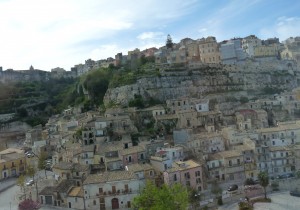 Though many Maltese tend to perceive their archipelago as a solitary group of islands in the centre of the Mediterranean Sea, the nearby island Sicily has always been closely present both geographically and often historically. The Archaeotur project aims to enhance the rediscovery of the archaeological and cultural identities of both islands, particularly by setting up a set of heritage trails which link a number of renowned sites together with other interesting locations that are presently found off the usual beaten tourist track.
Though many Maltese tend to perceive their archipelago as a solitary group of islands in the centre of the Mediterranean Sea, the nearby island Sicily has always been closely present both geographically and often historically. The Archaeotur project aims to enhance the rediscovery of the archaeological and cultural identities of both islands, particularly by setting up a set of heritage trails which link a number of renowned sites together with other interesting locations that are presently found off the usual beaten tourist track.On crisp clear nights, some Sicilians search out for Malta’s twinkling lights across the separating sea known as the channel of Malta. Similarly during a fine limpid day, the area of Mount Etna is distinctly visible from Mdina. One may thus wonder how the ancient populations of these islands might have regarded this ‘nearness’ and what they might have shared. The Archaeotur project focuses on these similarities but also on the differences which vividly portray an affinity but no less a diversity between the two places, thereby enticingly creating a new world to discover just a few kilometres away.
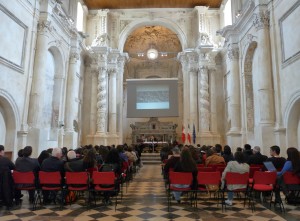 During last April, a group of Maltese experts in archaeology and in cultural tourism, together with a number of local university students, attended a three-day seminar that was held at the Auditorium San Vincenzo Ferreri in Ragusa Ibla. The Maltese and Sicilian counterparts discussed the plans of the Archaeotur project, gave detailed descriptions of some of the concerned archaeological sites and the findings discovered within, and shared information and ideas about what has been done so far and what work still needs to be tackled so that these sites are conserved and presented in the most professional way to all the visitors.
During last April, a group of Maltese experts in archaeology and in cultural tourism, together with a number of local university students, attended a three-day seminar that was held at the Auditorium San Vincenzo Ferreri in Ragusa Ibla. The Maltese and Sicilian counterparts discussed the plans of the Archaeotur project, gave detailed descriptions of some of the concerned archaeological sites and the findings discovered within, and shared information and ideas about what has been done so far and what work still needs to be tackled so that these sites are conserved and presented in the most professional way to all the visitors.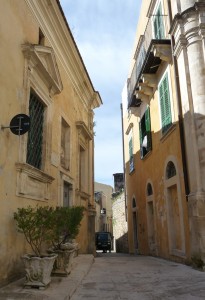 Residing in a small hotel in Ragusa Ibla, the Maltese participants could indulge in the historical aura of the oldest part of this town. Narrow alleys with speeding motorini and compact vans running through them led to some impressive medieval buildings and baroque palaces. Interestingly much of this area had to be rebuilt after a very strong earthquake hit Ragusa on the 11th January 1693, killing about 5000 people and destroying many remarkable buildings such as a castle, palaces, churches, and many houses. After this catastrophe, some survivors in Ragusa wanted to rebuild the destroyed part of the town in the same place whilst others preferred to build their residences in another area, thereby creating two facets of this town which eventually became known as the old and the modern Ragusa. Three bridges which connect the older part to the new part of the town have inspired people to identify Ragusa as the city of bridges. These bridges provide a stunning view of this historical town, its buildings huddled closely together, as if clinging for life to the strong high precipice. In the last years, the old centre has been revived again with the opening of a number of shops, bars, restaurants and hotels. Indeed, Ragusa’s distinguished Sicilian character has attracted many photographers and film producers, the latest of which being the popular Italian TV series of ‘Il Commissario Montalbano’.
Residing in a small hotel in Ragusa Ibla, the Maltese participants could indulge in the historical aura of the oldest part of this town. Narrow alleys with speeding motorini and compact vans running through them led to some impressive medieval buildings and baroque palaces. Interestingly much of this area had to be rebuilt after a very strong earthquake hit Ragusa on the 11th January 1693, killing about 5000 people and destroying many remarkable buildings such as a castle, palaces, churches, and many houses. After this catastrophe, some survivors in Ragusa wanted to rebuild the destroyed part of the town in the same place whilst others preferred to build their residences in another area, thereby creating two facets of this town which eventually became known as the old and the modern Ragusa. Three bridges which connect the older part to the new part of the town have inspired people to identify Ragusa as the city of bridges. These bridges provide a stunning view of this historical town, its buildings huddled closely together, as if clinging for life to the strong high precipice. In the last years, the old centre has been revived again with the opening of a number of shops, bars, restaurants and hotels. Indeed, Ragusa’s distinguished Sicilian character has attracted many photographers and film producers, the latest of which being the popular Italian TV series of ‘Il Commissario Montalbano’.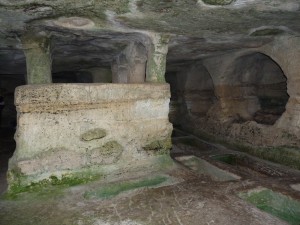 The seminars’ participants were also given the opportunity to visit some of the locations that are included in the Archaeotur project in order to understand better the significance and value of this endeavor. One of the most outstanding was certainly the catacomb of the Grotta delle Trabacche in Ragusa. Recently, this catacomb has been thoroughly cleaned out and conserved, and information posts have been placed in the vicinity in order to guide those visiting this site. Two central opulent and monumental tombs within this catacomb indicate that two individuals who had some importance or a form of authority in their society were buried there. Moreover, one finds several other common tombs that were dug out of the walls and floors of the cavern.
The seminars’ participants were also given the opportunity to visit some of the locations that are included in the Archaeotur project in order to understand better the significance and value of this endeavor. One of the most outstanding was certainly the catacomb of the Grotta delle Trabacche in Ragusa. Recently, this catacomb has been thoroughly cleaned out and conserved, and information posts have been placed in the vicinity in order to guide those visiting this site. Two central opulent and monumental tombs within this catacomb indicate that two individuals who had some importance or a form of authority in their society were buried there. Moreover, one finds several other common tombs that were dug out of the walls and floors of the cavern.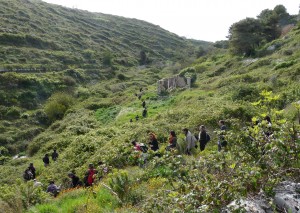 Ironically although hypogea and catacombs are directly connected with death, these sites tend also to provide crucial information about the life and the rituals of the living individuals who used these places. Therefore for example, a multitude of catacombs that are present in Cava Celone might be expressing the situation of an increasing population. These archaeological sites are magnificently enfolded within a wide valley full of wild vegetation, thus endowing the experience of visiting them with a sense of adventure; the silence reigning within the valley allows one to feel truly at one with nature. Meanwhile, the visit to three catacombs in this location revealed the work that still needs to be done on these archaeological sites, including cleaning, conserving, and planning a more practical path which the visitors could use for easy access.
Ironically although hypogea and catacombs are directly connected with death, these sites tend also to provide crucial information about the life and the rituals of the living individuals who used these places. Therefore for example, a multitude of catacombs that are present in Cava Celone might be expressing the situation of an increasing population. These archaeological sites are magnificently enfolded within a wide valley full of wild vegetation, thus endowing the experience of visiting them with a sense of adventure; the silence reigning within the valley allows one to feel truly at one with nature. Meanwhile, the visit to three catacombs in this location revealed the work that still needs to be done on these archaeological sites, including cleaning, conserving, and planning a more practical path which the visitors could use for easy access.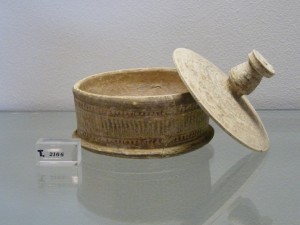 A visit to the Regional Museum of Camarina was undoubtedly distinctive especially because of the extraordinary display of a multitude of findings that were discovered both on land and under the sea of the Santa Croce Camarina area. Many of the artefacts discovered on land pertain to burial rites. Some of them are so refined that it is believed that they belonged to a Greek aristocracy who had immigrated to this area. On the other hand, the numerous objects that were recovered from several wrecks in the bay of Camarina demonstrate that many commercial ships passed through this zone. Among the prestigious exhibits, one finds a bronze archaic helmet that was recovered from a relic that lay seven metres under the sea in front of Punta Braccetto. Several amphorae, a classical Attic-Etruscan helmet, seventy-three clay lamps and some silver items were retrieved from two other relics that were buried in the middle of the bay. Likewise, in 1991, a huge storm revealed the treasure trove of a hoard of 6000 coins that was buried only 200 metres away from the coast.
A visit to the Regional Museum of Camarina was undoubtedly distinctive especially because of the extraordinary display of a multitude of findings that were discovered both on land and under the sea of the Santa Croce Camarina area. Many of the artefacts discovered on land pertain to burial rites. Some of them are so refined that it is believed that they belonged to a Greek aristocracy who had immigrated to this area. On the other hand, the numerous objects that were recovered from several wrecks in the bay of Camarina demonstrate that many commercial ships passed through this zone. Among the prestigious exhibits, one finds a bronze archaic helmet that was recovered from a relic that lay seven metres under the sea in front of Punta Braccetto. Several amphorae, a classical Attic-Etruscan helmet, seventy-three clay lamps and some silver items were retrieved from two other relics that were buried in the middle of the bay. Likewise, in 1991, a huge storm revealed the treasure trove of a hoard of 6000 coins that was buried only 200 metres away from the coast.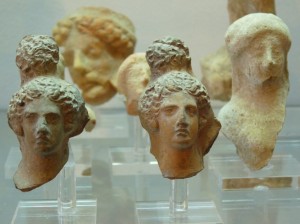 Undeniably, the participants in this seminar had a good taste of the potential of these Sicilian sites that are included in the project of Archaeotur. In the first week of September, a second seminar, this time organized in Malta, will once again reunite Maltese and Sicilian experts and participants so that they can evaluate the work that has been done so far and also to visit some of the Maltese sites which form part of the Archaeotur project.
Undeniably, the participants in this seminar had a good taste of the potential of these Sicilian sites that are included in the project of Archaeotur. In the first week of September, a second seminar, this time organized in Malta, will once again reunite Maltese and Sicilian experts and participants so that they can evaluate the work that has been done so far and also to visit some of the Maltese sites which form part of the Archaeotur project.No doubt this EU project is proving of great benefit towards cross-border cooperation in the sector of heritage conservation and interpretation and no less to cultural tourism which is certainly of substantial benefit to both territories.
Archaeotur is a 1.37 million euro project which is co-financed under the Italia-Malta Programme Cohesion Policy 2007 – 2013 and is part-financed by the EU European Regional Development Fund. The partners involved within it are: Mosta and Rabat Local Councils, Heritage Malta, Malta Tourism Authority, the Comune of Ragusa and the Comune of Santa Croce Camarina, the Superintendence of BB.CC.AA Ragusa, the Archaeological Park of Camarina, and Giritravel SRL. The main purpose of this project is to conserve, interpret and market a number of archaeological sites which generally consist of hypogea and catacombs across the Maltese and Italian borders such as: Ta’ Bistra (Mosta), St Augustine (Rabat), Trabacche, Cava Celone, Cisternazzi and Donnafugata (Ragusa), and Mezzagnone, Pirrera and Mirio (Santa Croce Camarina).
Further information about the Archaeotur project may be obtained through the website www.archaeotur.eu or by contacting Archaeotur Curator, Glen Farrugia, on glen.farrugia@gov.mt
(Note: An edited version of this article was published on FIRST magazine Issue September 2012).
Travelogue
Archives
| M | T | W | T | F | S | S |
|---|---|---|---|---|---|---|
| « Jan | ||||||
| 1 | 2 | 3 | 4 | 5 | 6 | 7 |
| 8 | 9 | 10 | 11 | 12 | 13 | 14 |
| 15 | 16 | 17 | 18 | 19 | 20 | 21 |
| 22 | 23 | 24 | 25 | 26 | 27 | 28 |
| 29 | 30 | |||||
Recent Posts
- A MATTER OF FATE
- MALTA’S PREHISTORIC TREASURES
- THE MAGIC IS IN THE DETAIL
- THE SELLING GAME
- NEVER FORGOTTEN
- Ġrajjiet mhux mitmuma – 35 sena mit-Traġedja tal-Patrol Boat C23
- AN UNEXPECTED VISIT
- THE SISTERS OF THE CRIB
Comments
- Pauline Harkins on Novella – Li kieku stajt!
- admin on IL-KARNIVAL TRAĠIKU TAL-1823
- Albert on IL-KARNIVAL TRAĠIKU TAL-1823
- Martin Ratcliffe on Love in the time of war
- admin on 24 SENA ILU: IT-TRAĠEDJA TAL-PATROL BOAT C23